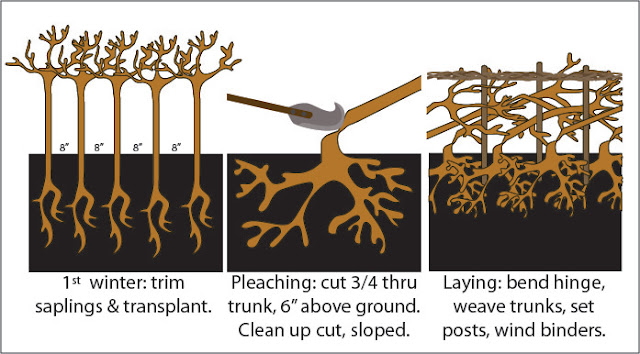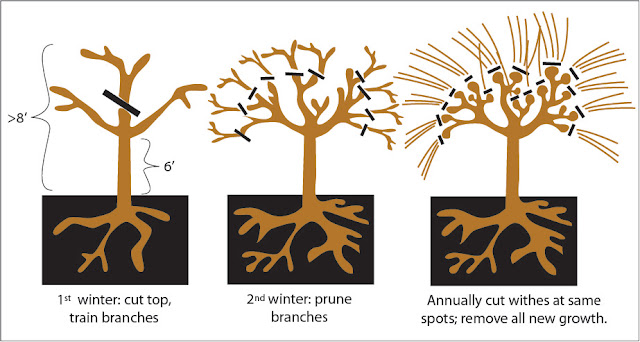Coppicing Part 4

The History and Sustainability of Coppicing Part 4: Hedges To read about other forms of coppicing, see Coppicing: Part 1 , Part 2 and Part 3 . Definition Hedges are lines of closely planted trees that form a barrier by growing together thickly. Fedges are living fences of trees, planted closely like a hedge, but carefully pruned to keep the trunks open and visible (the trunks are often woven in some aesthetically pleasing pattern). Hedges frequently reach 6' thick, and are allowed to grow with minimal edge-pruning for years at a time between pleachings. Fedges must be pruned yearly and only their tops become brushy and thick. History Hedges are as old as pasture divisions, and remain in use today. In WW2, hedge-rows in Europe were so old, well-rooted and impenetrable that they were able to stop tanks, and had to be blasted out of the way for machinery to get through. Unlike stone walls and wattle fences, hedges become stronger and better at containing livestock over

